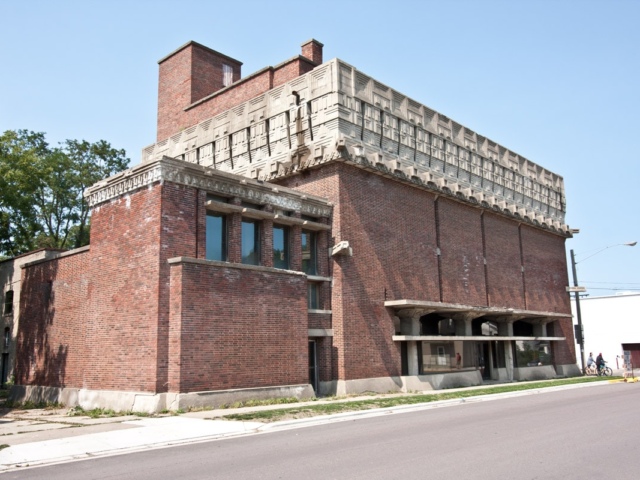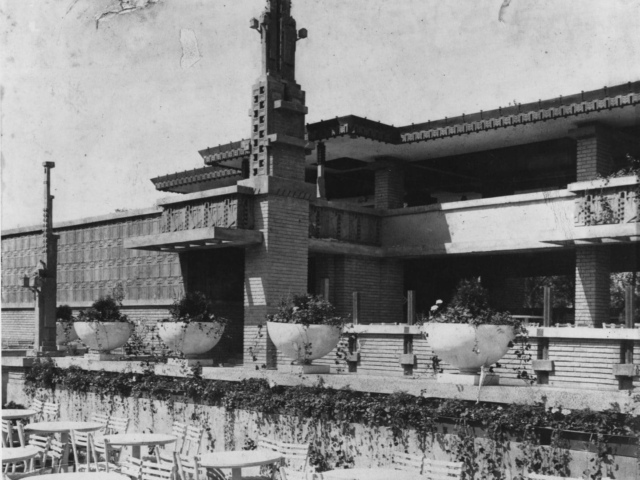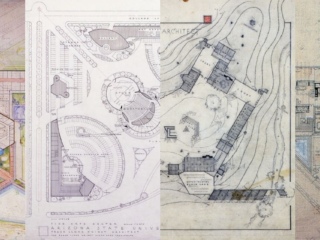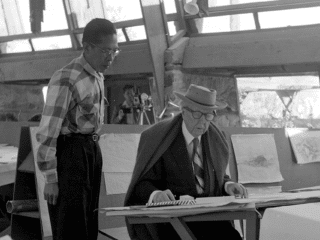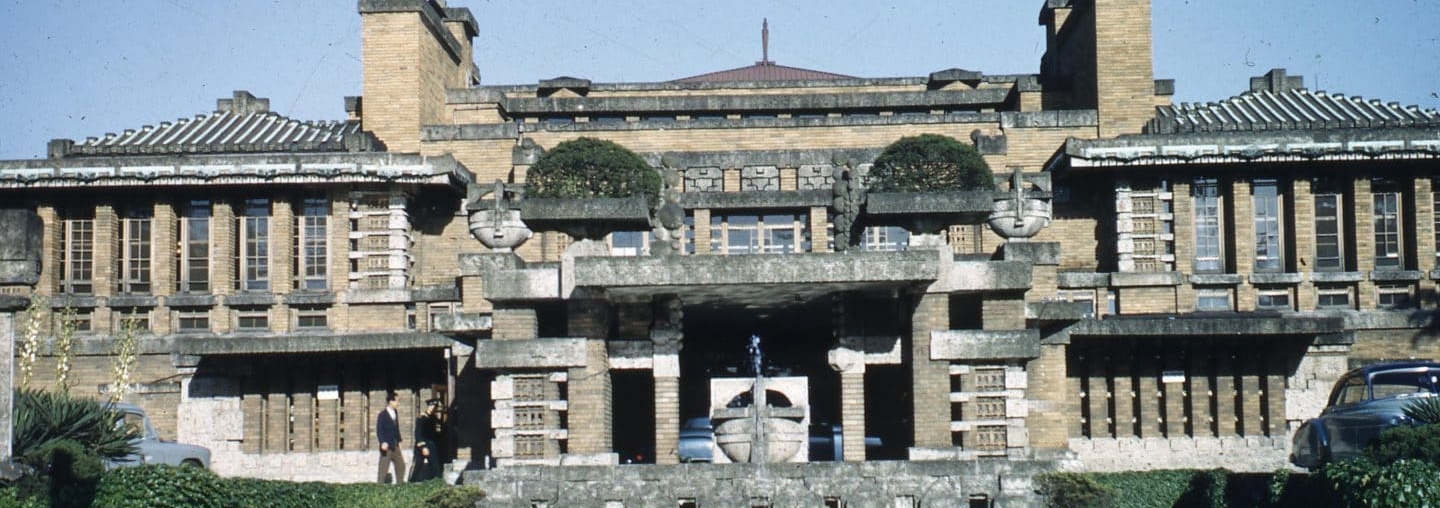
Imperial Hotel Lobby (Reconstruction)
Wright, an avid collector of Japanese prints, had long been intrigued by Japanese culture and jumped at the opportunity to build something in the Orient.
The expansion of Tokyo’s Imperial Hotel was meant to signal Japan’s modernity by displaying its ties to the West. To that end, Wright was hired to create a hybrid of Japanese and Western architecture. The hotel, constructed of concrete and Oya (a gray-green lava stone), had an extensive decorative scheme, facilitated by the abundance of skilled carvers. The strikingly symmetrical complex was built in a Mayan Revival style, drawing inspiration from the architecture and iconography of pre-Columbian Mesoamerican cultures. Engineered on a floating foundation with reinforced steel, Wright’s genius was exalted shortly after construction when the hotel survived the Great Kantō earthquake of 1923 with minimal damage. Though the Imperial Hotel was demolished in 1968, the entrance lobby was saved and reconstructed at the Meiji Mura architecture museum in Nagoya.

